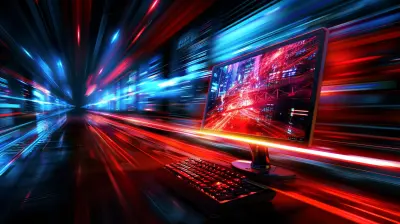How to Optimize Your PC Setup for Ultra-Performance
21 May 2025
If you're looking to crank your PC's performance up to eleven, you've come to the right place. Whether you're a gamer, content creator, or power user, having a finely-tuned setup can make a world of difference. But let’s be real—optimizing your PC isn’t just about slapping in some extra RAM or cleaning up your hard drive. It’s about diving deep into your hardware, software, and even your workspace to squeeze out every last drop of potential.
Ready to transform your PC into a performance beast? Let’s break it down step by step.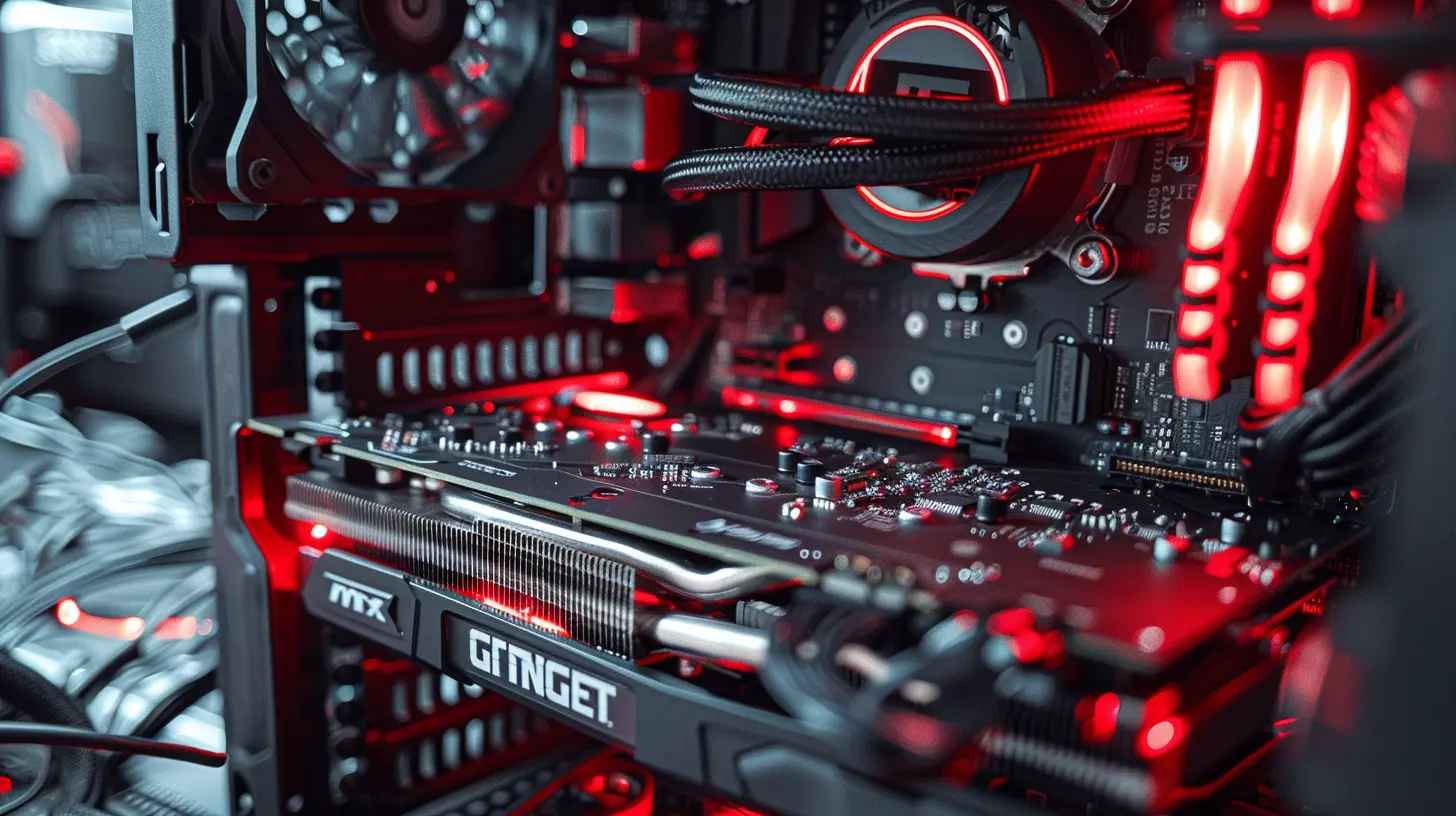
1. Start with the Basics: Cleanliness is Key
Let’s kick off with something simple yet super underrated—keeping your PC clean. I know, cleaning dust isn’t sexy, but hear me out. Dust buildup is the silent killer of performance. It clogs fans and traps heat inside your system, leading to throttling (when your system slows down to avoid overheating).What You’ll Need:
- Compressed air can (your new best friend).- Microfiber cloth.
- Q-tips for those hard-to-reach spots.
Cleaning Steps:
1. Shut down and unplug your PC. Safety first, folks!2. Crack open your case and gently blow out the dust, starting with the fans and heatsinks.
3. Use a microfiber cloth to wipe down components—don’t forget the GPU and RAM sticks.
4. For peripherals like a keyboard or mouse, compressed air works wonders.
Do this at least every 2-3 months, and your PC will stay cool, quiet, and happy.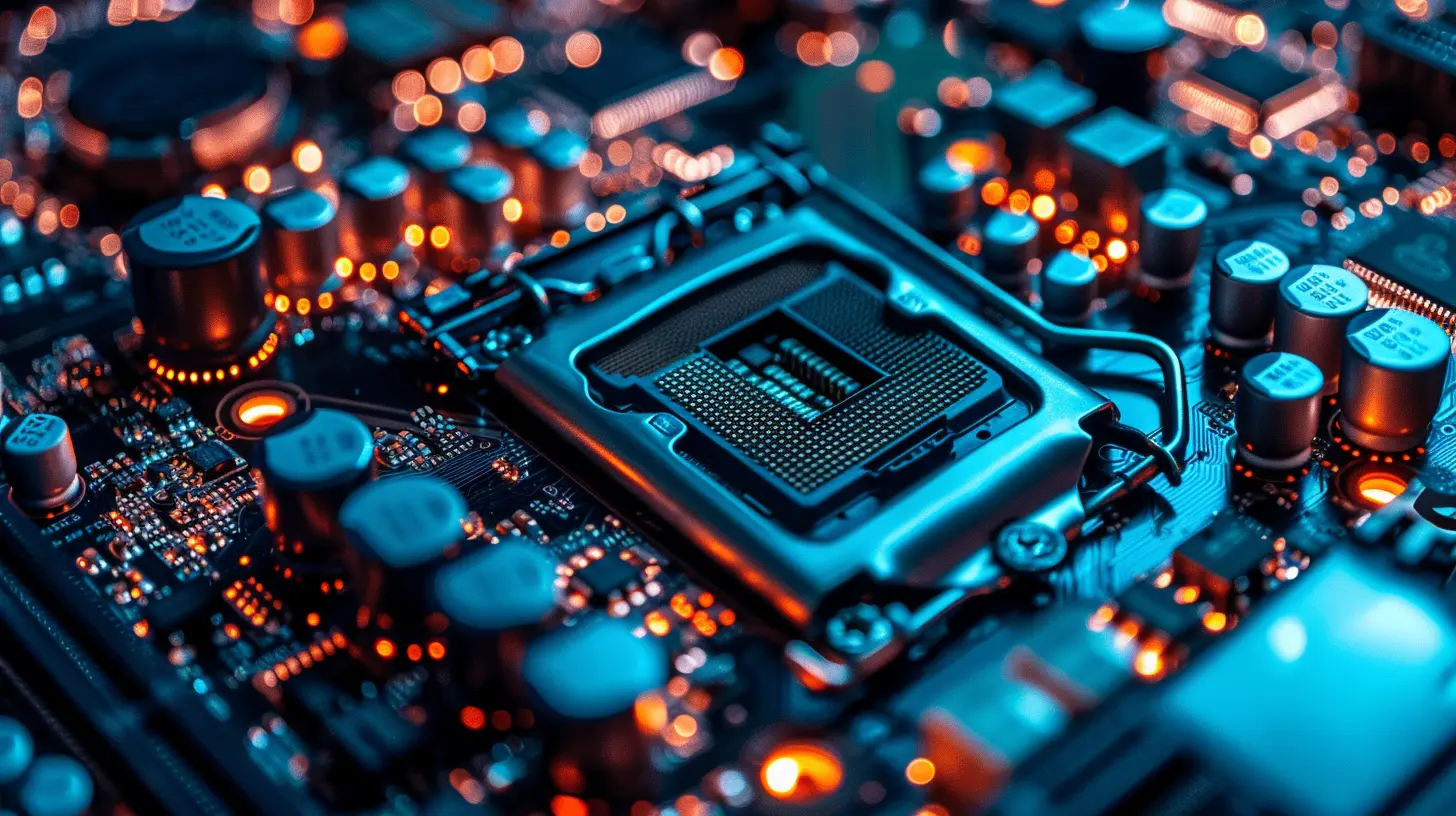
2. Upgrade Your Hardware: Invest Where it Counts
Sometimes, no amount of tweaking will save outdated hardware. If your PC is struggling to keep up, it might be time for an upgrade. But don’t run out and buy the shiniest, most expensive parts—focus on what actually impacts performance.Key Upgrades to Consider:
- RAM: Running out of memory? Upgrade to at least 16GB for gaming or 32GB for multitasking-heavy tasks.- SSD: Still using an HDD? Switch to an SSD (or NVMe SSD for even faster speeds). It’s hands-down the most noticeable upgrade.
- GPU: If you’re gaming or editing videos, a powerful graphics card like the NVIDIA RTX or AMD Radeon series can make a huge difference.
- CPU Cooler: An aftermarket cooler can keep your system running cooler and quieter, especially if you’re overclocking.
💡 Pro Tip: Prioritize what’s bottlenecking your system the most. If your GPU is solid but your storage is slow, upgrading to an SSD will give you the biggest bang for your buck.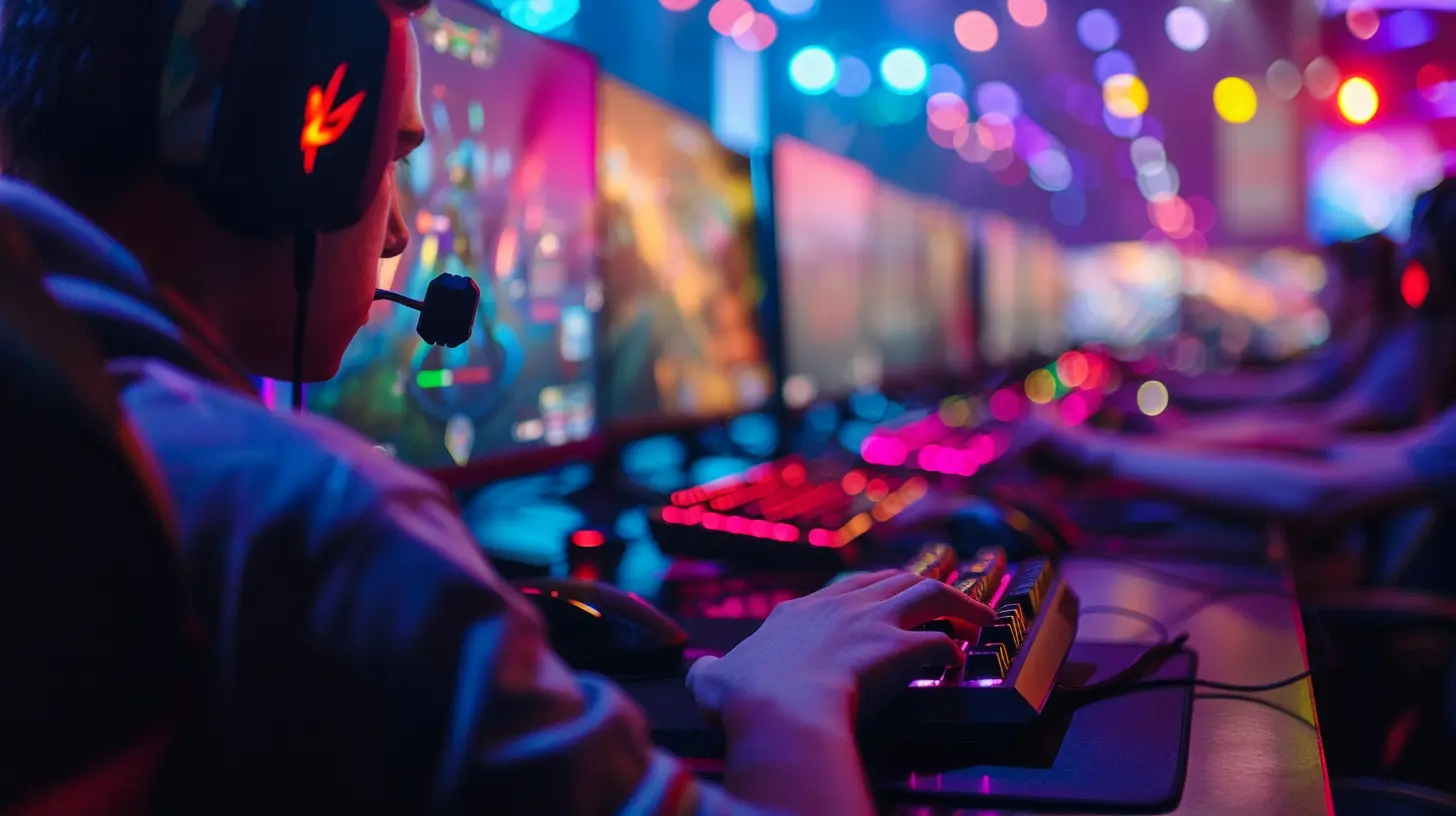
3. Tweak Your Software: Streamline Your System
You don’t always need new hardware to boost performance. Sometimes, all it takes is giving your software a little TLC.Optimize Your Operating System:
- Disable Startup Programs: A cluttered startup is like trying to run with a backpack full of bricks. Open Task Manager (Ctrl + Shift + Esc) and disable unnecessary programs under the “Startup” tab.- Keep Drivers Updated: Outdated drivers, especially for your GPU, can drag system performance down. Use a tool like NVIDIA GeForce Experience or AMD Adrenalin to stay current.
- Kill Bloatware: Get rid of unnecessary apps hogging resources. If you’re not using it, uninstall it.
Manage Background Processes:
- Use Task Manager to monitor CPU, GPU, and RAM usage. If something’s eating up your resources, like that random Chrome tab, close it.- Consider lightweight alternatives to resource-heavy software (looking at you, Google Chrome).
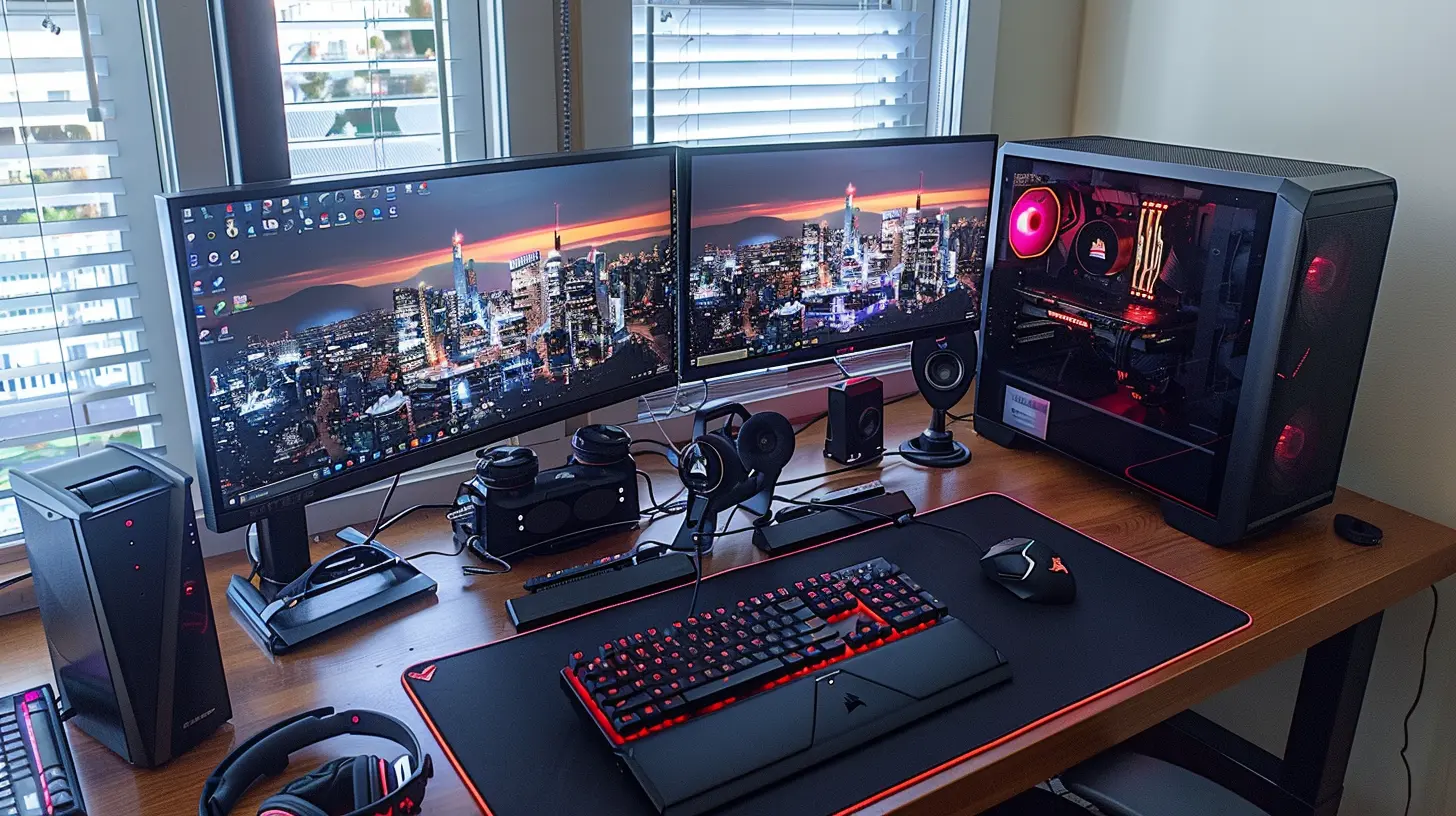
4. Overclocking: The Free Performance Boost
Okay, now we’re getting into the juicy stuff. Overclocking is like giving your hardware a shot of espresso—it pushes your CPU or GPU beyond its rated speed. But beware, it’s not for the faint-hearted. Done wrong, it can lead to instability or even hardware damage.How to Overclock Safely:
1. Research Your Hardware: Check if your CPU, GPU, and motherboard support overclocking.2. Use Reliable Tools: Try software like MSI Afterburner for GPUs or Ryzen Master for AMD CPUs.
3. Go Slow: Increase clock speeds gradually while monitoring temperatures.
4. Stress Test: Use tools like Prime95 or FurMark to ensure your system remains stable under heavy loads.
💡 Pro Tip: Invest in a quality CPU cooler if you’re planning to overclock. Stock coolers often struggle to keep up.
5. Optimize Your Workspace for Maximum Comfort
Ultra-performance isn’t just about what’s inside your PC—it’s about how you interact with it. If your workspace is cluttered or uncomfortable, even a beast of a PC won’t deliver its full potential.Ergonomic Setup:
- Invest in a Quality Monitor: Higher refresh rates (144Hz or more) and resolutions (1440p or 4K) can enhance both gaming and productivity.- Get a Comfortable Chair and Desk: Your posture matters! An ergonomic chair and adjustable desk can save you from back pain.
- Use Dual Monitors: Need to multitask? Two screens are better than one. Trust me, once you try dual monitors, there’s no going back.
Peripherals Matter Too:
- Mechanical Keyboards: Faster response times and better durability than standard keyboards.- Gaming Mice: Look for a mouse with adjustable DPI and customizable buttons.
- Good Headphones or Speakers: Whether gaming or working, clear audio can elevate the experience.
6. Tame the Beast: Keep Temperatures in Check
Heat is the enemy of performance. The hotter your PC gets, the more it throttles to prevent damage. Luckily, you can tackle this without breaking the bank.Cooling Tips:
- Improve Airflow: Arrange your fans for optimal airflow—intake at the front, exhaust at the back/top.- Apply New Thermal Paste: Over time, thermal paste between your CPU/GPU and its cooler dries out, reducing efficiency. Reapply it every couple of years.
- Upgrade Case Fans: Stock fans are often noisy and inefficient. Consider aftermarket options for quieter, better cooling.
7. Modernize Your Internet Connection
If you’re gaming or streaming, a laggy internet connection can make even the most powerful PC feel useless. Don’t overlook your network setup!Internet Optimization Tips:
- Upgrade to Fiber: If it’s available in your area, fiber offers insanely fast upload/download speeds.- Use Ethernet: A wired connection is always faster and more reliable than Wi-Fi.
- Upgrade Your Router: Old routers often struggle with modern demands. Look for dual-band or mesh routers for better coverage.
8. Regular Maintenance: Performance is a Marathon, Not a Sprint
Once you’ve optimized your PC, don’t just set it and forget it. Like a car, your PC needs regular checkups to stay in peak condition.Weekly Tasks:
- Clear your browser cache.- Restart your PC (seriously, when’s the last time you did this?).
Monthly Tasks:
- Run a virus/malware scan.- Check for updates (OS, drivers, and software).
Every Few Months:
- Clean your PC (see Step 1).- Reassess your storage. Move unused files to an external drive or cloud storage to free up space.
Final Thoughts
Optimizing your PC setup for ultra-performance doesn’t have to be rocket science. It’s all about a balance of hardware upgrades, software tweaks, and good old-fashioned maintenance. And don’t forget—comfort and usability matter just as much as raw power. At the end of the day, your PC is a tool to help you work, play, and create. Give it the love and attention it deserves, and it’ll return the favor with blazing-fast performance.all images in this post were generated using AI tools
Category:
Gaming GearAuthor:

Brianna Reyes
Discussion
rate this article
3 comments
Troy Wheeler
Great article! It’s fantastic to see tips on optimizing PC setups for ultra-performance. Whether you're a casual gamer or a hardcore enthusiast, these insights will definitely help elevate the gaming experience. Can’t wait to try out some of these suggestions for my own rig!
May 30, 2025 at 3:18 AM

Brianna Reyes
Thank you! I'm glad you found the tips helpful. Enjoy optimizing your rig!
Zephyris Bell
Great article! I appreciate the practical tips on optimizing PC setups for ultra-performance. Your insights on hardware upgrades and software tweaks are especially helpful. It’s always motivating to see how small changes can lead to significant improvements in gaming experiences. Looking forward to more articles like this!
May 24, 2025 at 3:49 PM

Brianna Reyes
Thank you for your kind words! I'm glad you found the tips helpful. Stay tuned for more articles!
Skyler Stevens
Great article! Optimizing your PC for ultra-performance involves upgrading your GPU, increasing RAM, and using an SSD for faster load times. Additionally, ensure proper cooling and regularly update drivers. Tweaking in-game settings and disabling background processes can further enhance your gaming experience. Happy gaming!
May 21, 2025 at 3:23 AM

Brianna Reyes
Thank you for the positive feedback! I'm glad you found the tips helpful for optimizing your PC setup. Happy gaming!



